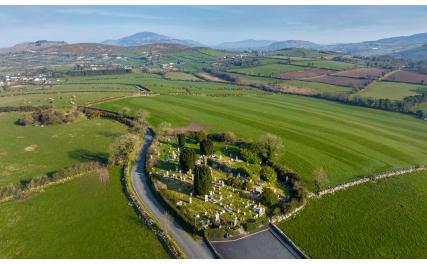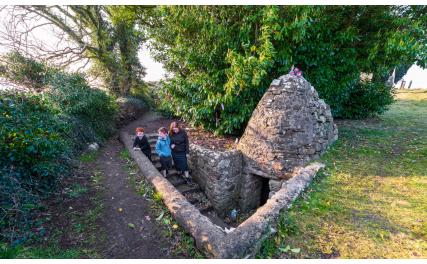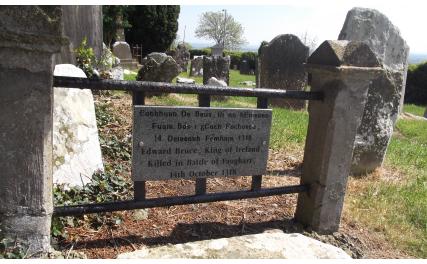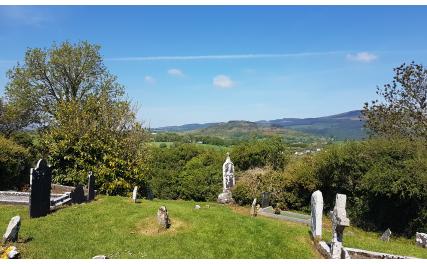Where
Faughart DundalkThe Hill of Faughart is a fascinating hidden gem and probably one of the most historic sites in County Louth.
Just a short drive from Dundalk, it sits on the boundary between Leinster and Ulster. This historic site is a place of peace and tranquility with wonderful views over Dundalk Bay and across to the Cooley Mountains.
Faughart is the traditional birth place of St. Brigid, Ireland’s iconic matron saint and the hill contains the ruins of a 12th century church, an ancient graveyard, St. Brigid’s Holy Well, St. Brigid’s Pillar, possibly the base for a high cross and St. Brigid’s Bed, a horse-shoe shaped enclosure which may have been a small building and was used until recent times as a penitential station.
The graveyard is a site of pilgrimage all year round, but particularly at the feast day of St. Brigid on February 1st, when people come from far and wide to pray, honour the saint, leave an offering on the Well Tree and collect water from St. Brigid’s Well. The cherished Shrine of St. Brigid, located just a few kilometers away, also attracts visitors throughout the year and is renowned for its ancient healing stones.
The strategic location of the Hill of Faughart, commanding views south to Dundalk and the Plain of Muirthemne, east to the Cooley Peninsula and north to the famous Gap of the North and majestic Slieve Gullion Mountain, has given it an added archaeological and historical significance.
It is a meeting place of history, mythology, religion and ritual. Its name is linked to the ancient Irish epic tale, the Táin Bó Cuailnge (The Cattle Raid of Cooley) in which the hero, Cúchulainn, casts a split holly tree through the neck and mouth of his foster brother Ferbaeth, giving the name Focherd Muirthemne – the ‘good cast of Muirthemne’. It was here that the young Cúchulainn fought in single combat against Queen Maeve’s warriors as they rampaged throughout Cooley in search of the mighty Brown Bull.
Faughart however was a place of settlement long before St. Brigid’s birth in the fifth century. One of the great ancient roads of Ireland, the Slí Midhluachra, ran past Faughart and onwards through the Gap of the North to County Antrim. The large crop mark enclosure on the hilltop, visible in aerial photographs, indicates that it may have been a Bronze Age hill fort from c1000 BC.
The graveyard is also reputed to be the burial ground of Edward Bruce (brother of Scottish King Robert Bruce) who was the last High King of Ireland and died at the Battle of Faughart in October, 1318.
What's Nearby
Visit Saint Brigid's Shrine to find out more about the Saint’s connections with the area Find out more here



